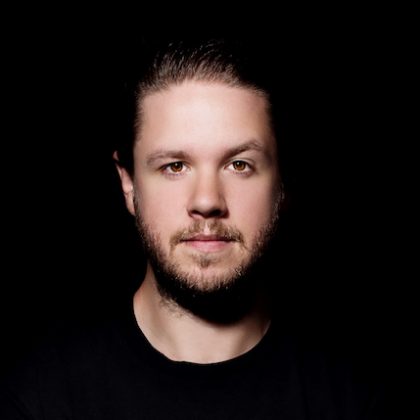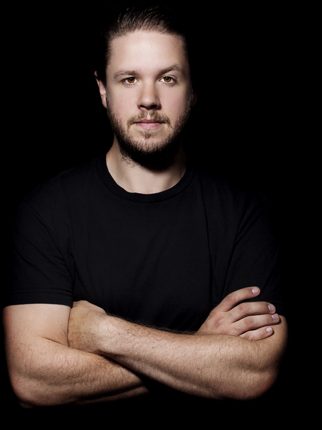First Gig Flashback: John Dahlbäck
Before the international tours and headlining time slots, every big-name artist had to start out somewhere. In our First Gig Flashback series, we tap the most in-demand DJs to trace the initial steps they took out onto the stage to grab their first taste of the limelight.
As difficult as it may be to picture, John Dahlbäck has not always been in his element behind the decks.
Like any other wide-eyed upstart looking to reach top-level selector status, the Swede had to work through a rocky start while he learned the ropes on how to thread together music made by other people. It was particularly difficult for him at first, because his primary focus was the studio. This is where he’s managed to excel time and time again without question, which meant having to drudge through hours of practice to get his mixing skills up to par with that of his productions.
.jpg)
Now over a decade deep in the game, Dahlbäck has just released the third and most distinguished full-length, Saga, to his discog. Released on the mighty Armada imprint, it shows his uncanny ability to touch on myriad genres and moods. Many of the featured tracks will find their way into the ears of dance music fans the world over—not just from online streams, but also via the heralded hands of this now-seasoned vet.
It’s no longer amateur hour, which a young version of Dahlbäck had to push past during his first international booking many moons ago. In this installment of our First Gig Flashback series, we hear how he secured his first couple of international shows in Holland.
“I released my first record when I was 15 or 16,” he says, “but back then, I was only playing local Stockholm bars and stuff.”
After nabbing a number of small-scale shows in his hometown, the then 17-year-old fledgling was offered his first international proposal. A rando promoter reached out to him via email with an offer of bringing Dahlbäck out to Holland for a couple of low-key gigs.
“I was very nervous,” he recalls of the moment his mom dropped him off at the airport. “I waved goodbye after the security check, and I felt like I was going to war almost for a few years.”
This unnerving feeling he was experiencing was from a combination of it being the first time in his life he would leave Sweden’s borders, let alone by lonesome, and being flown out to another country like an artist who has finally made it. It’s a big deal, especially for a teenager who had to ask for time off from school just to make it out in the first place.
Upon arriving, Dahlbäck soon learned he would have to shack up with the promoter at his personal pad in one of Amsterdam’s suburbs. “It was really weird, because I stayed with the guy in his house,” he says. “He had a bunch of cats, and there were a bunch of weird smells in the house.” This was obviously a less-than-ideal sleeping arrangement, but the stench of foul-smelling kitties wasn’t the only part that reeked from his trip.
“I didn’t know at all how to read crowds. These were aliens to me, almost. I didn’t understand what they were thinking or why they weren’t dancing or were dancing. I didn’t really understand what I was supposed to do.”
Aside from saving on hotel costs, the promoter found an odd way of cutting more corners and squeezing more from the talent than normal: Dahlbäck was also on the hook for pulling a few daytime shifts at a local record store in-between the two gigs he had lined up.
“He had a record shop, and I sort of had to work there for some reason,” he says. “I stole a bunch of records, too. One of those records happened to be an old Plastikman release.”
Pocketing the record would give Dahlbäck some extra ammo for his two shows, the first taking place at a watering hole located in the Red Light District. The headcount was relatively light that night, with only 200 people showing up to catch his set. He admits it wasn’t his finest performance, as he was a novice DJ at best.
“I wasn’t very used to that whole thing at all. I don’t come from clubbing. I was always on the music side. I wasn’t, like, a raver kid. I didn’t know at all how to read crowds. These were aliens to me, almost. I didn’t understand what they were thinking or why they weren’t dancing or were dancing. I didn’t really understand what I was supposed to do.”
He wasn’t too hung up on the lackluster performance, mostly because he did just as well as anyone with so few hours logged; but that was least of his trouble. It wasn’t until he was back in the room that he got his first brush with the plight of the traveling DJ.
“I felt really homesick,” he says. “I was constantly on the phone with my parents. I called an ex-girlfriend and told her, ‘I love you. Let’s get back together.’ It was very desperate.” With only one more show to go, he had to push through the irrational behavior and learn how to cope with being alone on the road.
The city of Utrecht was where his second booking happened; this time, a much larger crowd showed up to see what Dahlbäck was capable of. “There were maybe 500–1,000 people there,” he remembers. “I played a lot of the big techno tracks around the time, like the stuff I used to do and the stuff my cousin Jesper used to do.”
Although it was a modest improvement from the RLD bar performance he was just coming off of, he still sort of tanked.
“I probably made a thousand mistakes,” he says, “but the end became better, because I understood what I was supposed to do. Of course, these shows were very important to me, but I don’t know if the people there enjoyed it much.”
He gives a brutally honest self-critique of it all, but it doesn’t get under his skin because, first and foremost, the production aspect was always key. “I loved making music, but I hated to DJ. But I guess I had to start enjoying it at some point.”
It took four years and some change for him to find his stride, and that’s when the tour dates started rolling in. Although his days of spinning wax are long gone, he’s a testament to the age-old adage that practice makes perfect.
Follow John Dahlbäck on Facebook | Twitter | SoundCloud





